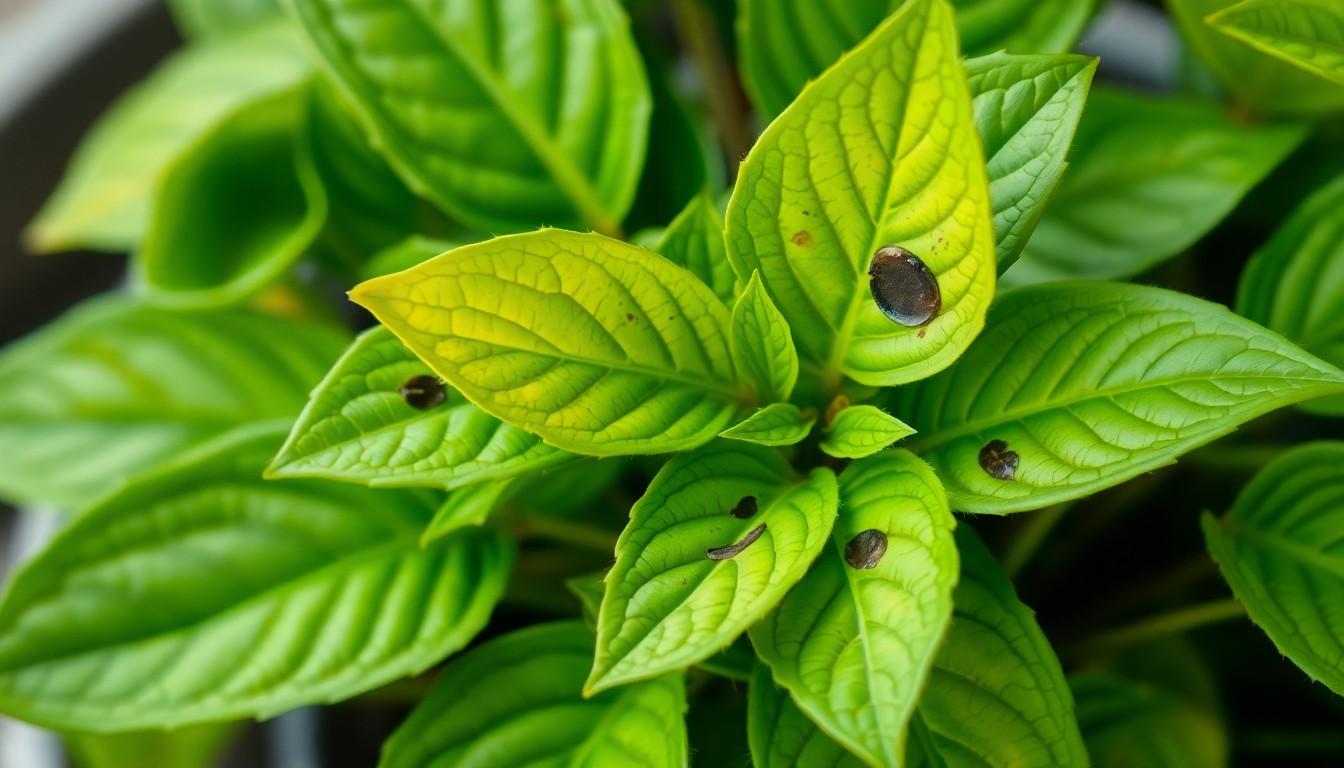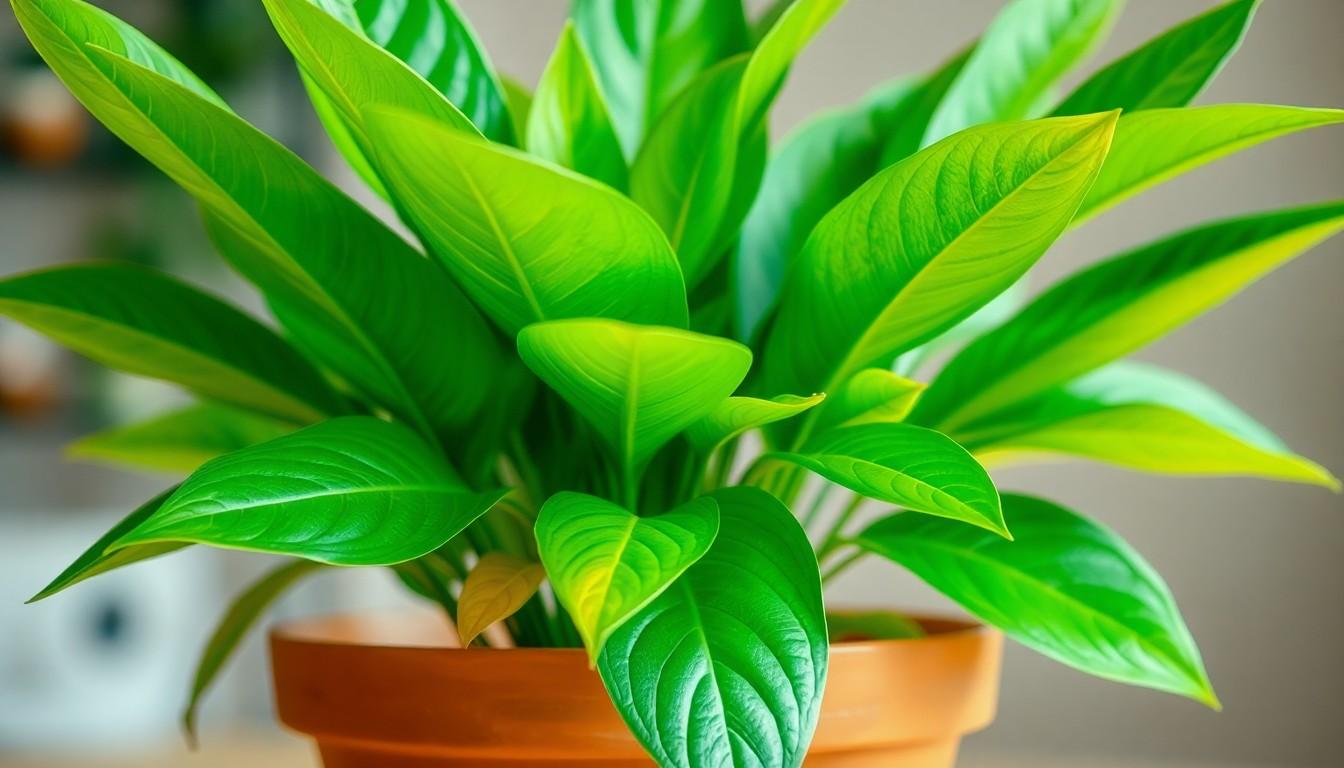ZZ plants are the unsung heroes of indoor gardening, thriving in low light and forgiving neglect like a friend who always shows up with snacks. But even these resilient green warriors can fall victim to pesky diseases that threaten their glory. Understanding ZZ plant diseases is crucial for any plant parent who wants to keep their leafy companion looking fabulous and healthy.
Overview Of ZZ Plant Diseases
ZZ plants, known for their hardiness, face several potential diseases. Root rot, a common issue, stems from overwatering. Symptoms include yellowing leaves and a mushy root system. Identifying root rot early can prevent further damage.
Fungal infections may also affect ZZ plants. Leaf spot, characterized by dark, circular spots on leaves, often results from high humidity. Managing humidity levels helps minimize these risks. Regularly inspecting leaves for irregularities aids in early detection.
Pests can pose serious threats, too. Mealybugs or aphids might infest ZZ plants, causing leaf discoloration and stunted growth. Treating infestations promptly with insecticidal soap or neem oil can restore plant health. Keeping the environment clean reduces pest attraction.
Additionally, bacterial infections can impact ZZ plants. Bacterial leaf blight shows as water-soaked areas and may lead to leaf drop. Ensuring good air circulation around the plant combats bacterial issues.
Lastly, ZZ plants can also suffer from environmental stress. Exposure to extreme temperatures or direct sunlight might cause leaf scorch. Monitoring light and temperature conditions allows for a healthier plant.
Being proactive about these diseases helps maintain ZZ plant vigor. Regular care and observation provide the best defense against potential issues. Proper culture practices significantly enhance the resilience of these plants.
Common Diseases Affecting ZZ Plants

ZZ plants can encounter several diseases that impact their health. Understanding these common issues helps maintain vibrant foliage.
Root Rot
Root rot poses a significant risk due to overwatering. Symptoms include yellowing leaves and a mushy root system. Providing well-draining soil minimizes water retention. Signs of root rot appear quickly, often showing up as wilting despite adequate watering. Treatment involves removing affected roots and repotting in fresh soil. Monitoring watering frequency is crucial to prevent this issue.
Leaf Spot
Leaf spot manifests as circular, dark lesions on leaves. Fungal infections typically cause this issue, thriving in high humidity conditions. Infection leads to unsightly foliage, ultimately affecting plant vigor. Reducing humidity and improving air circulation helps mitigate these spots. Frequent inspection enables early detection, increasing the chances of successful treatment. Application of fungicides may also prove beneficial in managing outbreaks.
Powdery Mildew
Powdery mildew appears as a white, powdery coating on leaves. Environmental stress or poor airflow often triggers this fungal disease. Affected plants exhibit stunted growth and decreased vitality. Increasing airflow and avoiding excessive humidity can help prevent the onset. Treatment involves pruning infected leaves and using fungicides when necessary. Keeping plants well-spaced promotes healthier growth and reduces the likelihood of this issue developing.
Symptoms Of ZZ Plant Diseases
Recognizing symptoms of ZZ plant diseases allows for timely intervention and treatment. Early detection enhances the chances of recovery and plant health.
Visual Indicators
Yellowing leaves serve as a primary visual indicator of issues, often linked to root rot. Dark lesions on leaves indicate leaf spot, commonly due to fungal infections. Stunted growth may result from pest infestations, particularly mealybugs and aphids. Water-soaked areas signify bacterial infections like bacterial leaf blight. Leaf scorch appears as browning edges caused by environmental stress. Each of these symptoms signals that immediate attention is necessary to restore plant vitality.
Progression Of Disease
Progression of diseases can vary depending on environmental conditions. Root rot spreads rapidly if overwatering continues, leading to extensive root damage. Leaf spot can worsen with high humidity, causing more leaves to be affected. Pests, once established, can multiply quickly, resulting in widespread discoloration. Bacterial diseases may escalate, leading to extensive leaf drop if not managed. Environmental stresses compound these issues, increasing vulnerability to diseases. Monitoring these factors ensures timely responses that preserve plant health.
Prevention And Treatment
Maintaining the health of ZZ plants involves specific strategies for disease prevention and treatment. Proactive measures ensure these resilient plants thrive.
Proper Watering Techniques
Watering practices play a crucial role in preventing root rot. Overwatering leads to yellowing leaves and soft roots, creating an environment for fungal growth. Checking soil moisture before watering is essential. Allow the top inch of soil to dry out, ensuring roots receive air. Choose well-draining pots and soil to enhance drainage. Adjust watering frequency according to seasonal changes, as ZZ plants require less water during fall and winter. Monitoring humidity levels also helps prevent fungal infections.
Use Of Fungicides
Fungicides can effectively treat fungal infections like leaf spot and powdery mildew. Applying a suitable fungicide as soon as symptoms appear promotes recovery. Follow the manufacturer’s instructions for dosage and frequency to avoid harming the plant. Ensuring good air circulation around the plant reduces humidity, further preventing fungal growth. Pruning infected leaves enhances air flow while delivering a mechanical solution to mitigate infection spread. Employing these measures enhances the overall resilience of ZZ plants, keeping them healthy.
Conclusion
Maintaining the health of ZZ plants requires vigilance and proactive care. By understanding the common diseases that can affect these resilient plants, owners can take steps to prevent and address issues before they escalate. Regular inspections and appropriate watering techniques are vital in avoiding problems like root rot and fungal infections.
Implementing good cultural practices enhances the plant’s ability to thrive. With the right attention and care, ZZ plants can continue to flourish, adding beauty and greenery to indoor spaces. Keeping a close eye on symptoms ensures that any potential threats are managed swiftly, allowing these hardy plants to remain healthy and vibrant.

